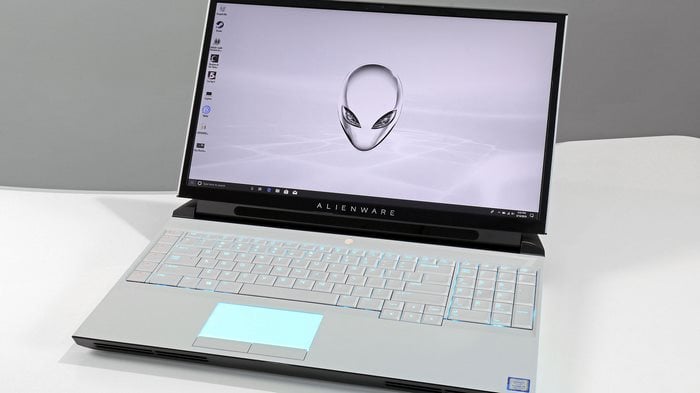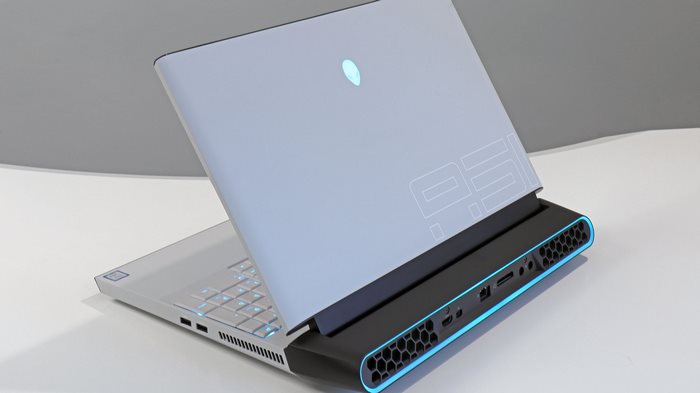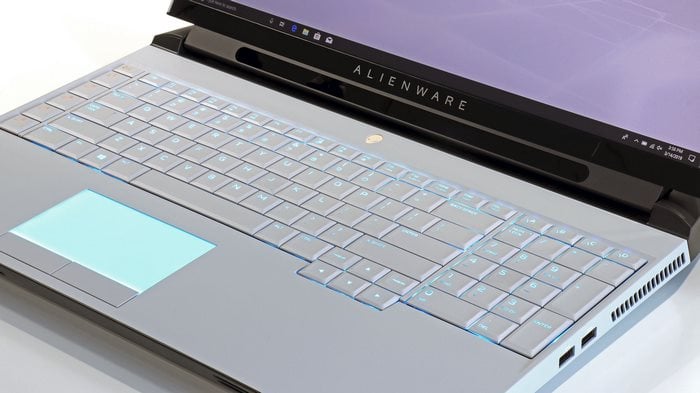Alienware Area-51m Benchmark Preview: A Laptop That Can Slay Desktops
Back at the CES show in January, we toured Dell's refreshed Alienware Area-51m notebok, a true desktop replacement machine in every sense. Fast forward a couple of months and we now have one of these fully loaded beast systems in-house. We're working on the full review but in the meantime, we wanted to give you a preview of what this machine uniquely-built laptop brings to the table.
The Alienware Area-51m sports a new design and is being billed as the "most powerful gaming laptop" around. Dell backs that claim by injecting the laptop with up to a 9th generation Intel Core i9-9900K processor, making this Dell's first notebook to support 8-core CPUs. That alone is noteworthy, though it is far from the end of the story.
As with on the desktop, the Core i9-9900K entices overclocking with its unlocked config, which Alienware assists with through overclocking tools within its Alienware Command Center software. While not wholly unique to laptops, particularly desktop replacements, the majority of notebooks steer way clear of overclocking. That's not the case here. What's really unique, though, is that the new Area-51m is easily upgradeable.
Alienware has taken the design ethos of a desktop and applied it to a laptop form factor. The only real caveat is that Alieneware advises purchasing the CPU and proprietary graphics module direct from Dell (the company says it uses a "very specific thermal paste" for the CPU). That said, the goal is not to lock users into buying components from Dell, so of course users can venture out on their own as well, if they so choose. Here's more on the design strategy from Dell's VP and GM of Dell XPS and Alienware, Frank Azor...
Towards the end of the interview, Azor talks about the Area-51m being easy to service and upgrade. Whereas laptop designs are trending towards sealed form factors that are difficult to crack open and get into, the Area-51m is like a desktop, in that it's not difficult to dive into the guts of the system (as you can see above). Even the graphics is modular. Alienware also plans on hosting several videos on YouTube, to help users with certain upgrades.
Being a desktop replacement, this baby has a chunky backside, though it's dressed up with LED lighting. Beyond the aesthetics, what you're seeing in the image above is the dual exhaust system powered by the blower fans you'll note above as well. Underneath the laptop are more vents, along with what you see on the side, for a dual intake system as well.
"Our
chassis prioritizes performance with a dual fan design
that pulls in cool air from the bottom and top vents
while exhaling with plenty exhaust area along the rear
and side vents optimizing cooling for the core
components," Alienware explains.
The cooling system is also aided by high voltage driving fans, load balancing heat pipes, and copper fin stacks. Short and sweet, Alienware engineered a cooling system that should be able to handle the high-end hardware and overclocking.
The LED keyboard is fairly standard for a gaming laptop with a full numpad and shaped key caps. However, what's neat is the stealthy Tobii Eye Tracking, a feature that is not immediately obvious. It's there, though, and in our testing so far, it works amazingly well. The bubble on the screen is tracking HotHardware's Editor-in-Chief Dave Altavilla's eyes, and that is actually his skull, in Tobii rendered form. Quite frankly, he's never looked better!
There is a price to pay for all of this power in a laptop form factor. As you can see above, there are two power bricks, one 330 watt and one 180 watt. Both are needed to unleash the laptop's full power, though if you want to go lighter on the road, you can get by with just the 330 watt brick.
Benchmarks
The model we are testing boasts an Intel Core i9-9900K processor, GeForce RTX 2080 GPU, 32GB (2x16GB) of DDR4-2400 memory, a 1TB (2x512GB in RAID 0) M.2 PCIe SSD, and a 1TB SSHD. All of this powers the 17.3-inch 1920x1080 IPS display, which has a 144Hz refresh rate and G-Sync. Here's a glimpse of the performance this system delivers...
The Cinebench R15 scores are in line with what we would expect from the hardware, which tells us that the cooling system is working as it should and this machine performs very much like a full-sized desktop PC.



The takeaway from our early testing is that gaming at super high frame rates at the Area-51m's native resolution is not a problem. Both the GeForce RTX 2080 and Core i9-9900K flex their respective muscles well and can really stretch their legs. As you can see in our benchmark comparisons, gaming performance is on par with an 18-core/36-thread desktop outfitted with the same class of GPU. That is impressive, but give the 9900K's max 5GHz Turbo Boost, it's generally an excellent CPU for gaming. On the other hand, for highly threaded workloads, like content creation, certainly the Core i9-9980XE Skylake-X series processor in our desktop test system will distance itself handily.
Regardless, stay tuned as we will have a full evaluation posted soon, so stay tuned!







